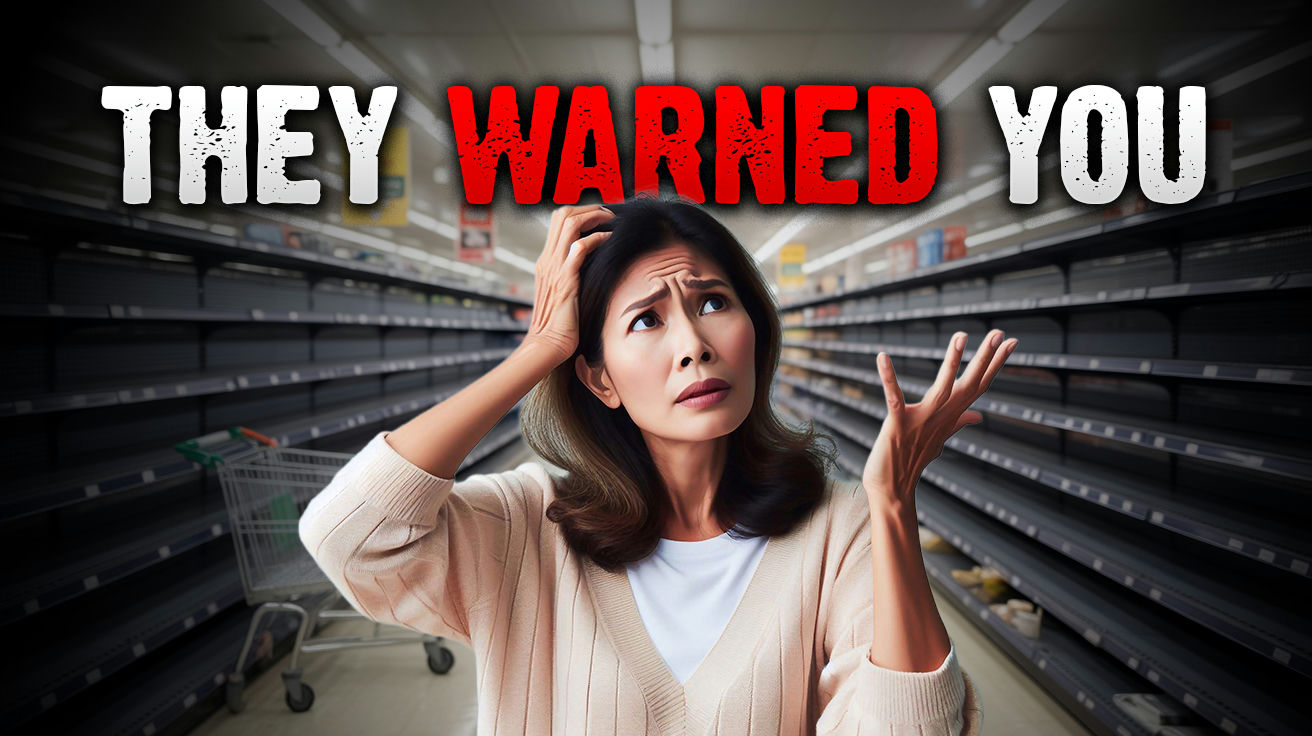The warning signs flash red across the retail landscape, and major chains, from Walmart to Home Depot, sound alarms about incoming supply chain disruptions. Global shipping routes, trade agreements, and tariff policies are reshaping at a pace not seen in decades, with American consumers directly in the blast radius.
Your ability to access everyday essentials at reasonable prices hangs in the balance.
10. Retail Giants Are Sounding the Alarm

Major retailers like Walmart, Target, and Home Depot are already warning about supply chain strain. Cargo shipments from China have plummeted 35% yearly, forcing retailers to make tough choices. The National Retail Federation forecasts a concerning 15% drop in inbound cargo, translating directly to less variety and higher prices at your local stores.
Empty shelves aren’t just a theoretical worry anymore. When massive corporations start canceling orders with suppliers, you should take notice—unless you enjoy paying $15 for the last crushed box of pasta at 7-Eleven.
9. Tariffs Are Coming for Your Wallet

The ripple effects of new tariff policies are hitting everywhere, from packaging to ingredients. Manufacturers face brutal decisions: rush orders now, hope for the best later, or pass those costs directly to you. Analysts across industries are warning of significant supply disruptions as tariff implementation creates complex economic reactions.
Even the Port of Los Angeles projects at least a 10% import decline, and that’s the optimistic view. When shipping companies report 30% of China-US shipments already canceled, that’s not just a statistic—it’s your future shopping experience.
8. Global Trade Routes Are Shifting Away

Unlike previous trade tensions, current realignments are creating permanent changes. No meaningful US-China trade deals have materialized, while China builds strategic alliances elsewhere. Shipping volumes between China and other nations have significantly increased, effectively bypassing US markets.
China, Japan, and South Korea are negotiating new trade pacts that exclude American interests. These aren’t temporary adjustments but fundamental shifts that leave US businesses increasingly isolated from key global partners.
7. The BRICS Factor Changes Everything

The expanded BRICS alliance now represents nearly half the world’s population and over 40% of global GDP. With Egypt, Ethiopia, Iran, the UAE, and Indonesia joining the economic bloc, the dollar’s traditional dominance faces unprecedented challenges.
For consumers, this translates to changing price dynamics across virtually everything you buy. When global currencies shift, your purchasing power gets hit from multiple directions at once, like watching your favorite streaming services all raise prices the same month.
6. Food Safety Is More Vulnerable Than Ever

Weakened oversight in food safety inspections creates genuine risk. Key support staff reductions and quietly closed FDA investigations mean your food safety now depends increasingly on your vigilance. Recent E. coli outbreaks have already occurred, with concerning reports of plastic parts found in consumer food products. As a result, using modern food preservation techniques and crucial survival innovations offer solutions beyond storage methods.
The comfortable assumption that regulatory bodies are thoroughly protecting your food supply needs serious reconsideration in today’s environment. Trusting blindly in food safety is like expecting privacy from that $30 smart speaker you got on Prime Day.
5. Local Sourcing Beats Global Uncertainty

Building relationships with local farmers and businesses creates resilience when global supply chains falter. Local food sources typically have shorter, more transparent supply chains with fewer points of failure. Locally sourced products travel an average of 27 times less distance than conventional retail goods.
Beyond just securing your supplies, supporting local businesses strengthens community economic resilience. Farmers’ markets may cost 10-15% more upfront, but that premium buys you supply chain insurance that Amazon can’t match.
4. Water Purification Becomes Non-Negotiable

Systems like Co-Pure remove up to 99.9% of contaminants including, heavy metals, PFAS, chlorine, and microplastics. With PFAS contamination affecting up to 95 million Americans, having independent water purification capability transitions from luxury to necessity.
Basic pitcher filters ($30-60) handle chlorine but miss most serious contaminants. Mid-range countertop systems ($150-250) catch more but still miss PFAS. Premium systems like Co-Pure ($300-600) provide comprehensive protection through four-stage filtration with digital purity readouts—still cheaper than a year’s supply of bottled water for a family of four.
3. Strategic Stockpiling Beats Panic Buying

When everyone rushes to stores simultaneously, shelves empty within hours. Smart preparation happens before emergencies hit. Building a sensible supply of shelf-stable foods, medications, and essential items creates a buffer against both shortages and price spikes.
The average American household has only 3-5 days of food on hand, leaving minimal margin for disruption. Spending $200-300 on additional nonperishables now could save you from paying panic prices later—the same price gouging logic that turns $12 umbrellas into $40 umbrellas when it starts raining.
2. Self-Reliance Skills Matter Again

Basic repair abilities, effective survival gadgets, and practical knowledge provide options when services become unavailable or unaffordable. Learning fundamental skills like basic plumbing repairs, appliance maintenance, or food preservation creates resilience that no amount of stockpiling can match.
Communities where neighbors share skills and resources weather disruptions far better than those dependent entirely on functioning commercial services. A $25 repair manual and a $100 toolkit will outperform a $1,000 service contract when nobody’s answering the phone.
1. Decisive Action Beats Wishful Thinking

The time to prepare is before disruptions become obvious to everyone. Amazon and Walmart have already stopped orders with Chinese suppliers, signaling serious concerns about future inventory.
Those waiting for official announcements or government guidance typically end up competing with panicked crowds for dwindling supplies. Taking measured, thoughtful steps now eliminates the need for desperate measures later—unless paying 300% markups on emergency supplies sounds like your idea of retail therapy.





























